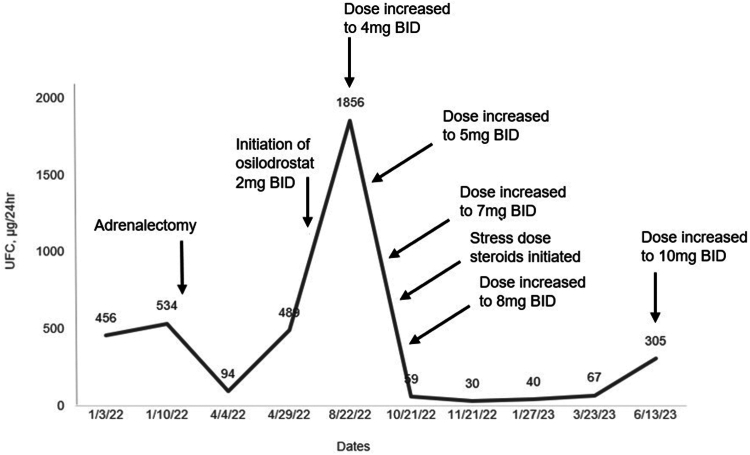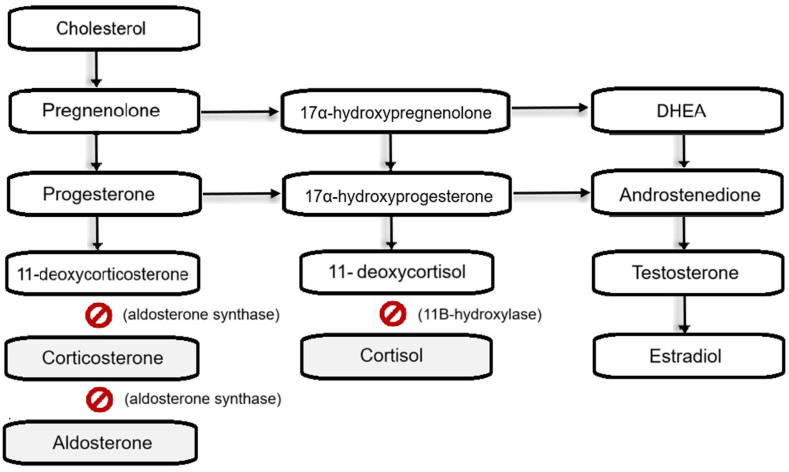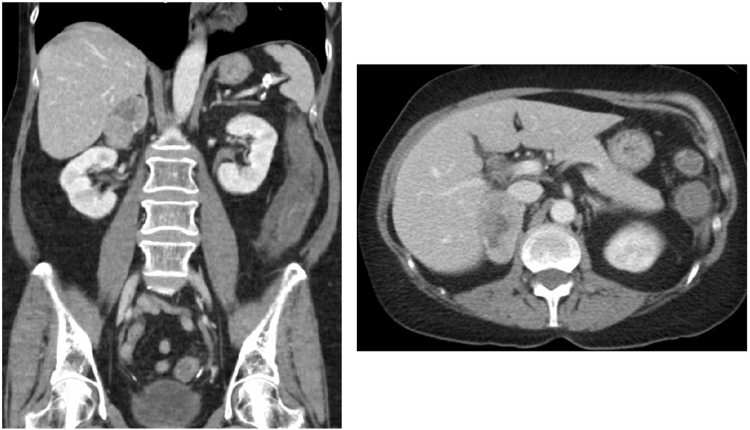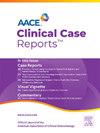A Case of Severe Cushing Syndrome due to Metastatic Adrenocortical Carcinoma Treated With Osilodrostat
IF 1.2
Q3 Medicine
引用次数: 0
Abstract
Background/Objective
Osilodrostat used with block-and-replace dosing regimen is an off-label alternative to traditional management of Cushing syndrome due to adrenocortical carcinoma (ACC).
Case Report
A 70-year-old woman presented with abdominal pain and was found to have a large right adrenal mass and hypercortisolism. Right adrenalectomy was pursued with pathology consistent with diagnosis of ACC. Three months after surgery, hypercortisolemia recurred and bony metastatic disease was detected soon after. The patient received chemotherapy and mitotane; however, mitotane was stopped after development of hemolytic anemia. The patient’s urinary free cortisol became severely elevated, and osilodrostat was subsequently initiated for steroidogenesis inhibition. As dosage was increased, the patient presented with fatigue and hypotension and was diagnosed with adrenal insufficiency. This was managed with hydrocortisone in a block-and-replace dosing strategy.
Discussion
ACC can cause severe hypercortisolism, which is associated with significant morbidity and mortality. Osilodrostat was an effective off-label option for steroidogenesis inhibition in our patient who developed severe hypercortisolism and did not tolerate first-line therapy. Our patient also experienced iatrogenic adrenal insufficiency during treatment with osilodrostat, which was successfully managed using a block-and-replace strategy. There are limited cases currently available that document use of osilodrostat under the above circumstances.
Conclusion
Although osilodrostat is currently only approved for use in pituitary Cushing disease, we found it effective in off-label use to treat Cushing syndrome due to ACC. Using a block-and-replace treatment strategy was a practical intervention after development of adrenal insufficiency.



奥西洛他治疗转移性肾上腺皮质癌所致严重库欣综合征1例。
背景/目的:奥西洛他与阻断-替代给药方案一起使用,是肾上腺皮质癌(ACC)所致库欣综合征传统治疗的一种非适应症治疗方案。病例报告:一名70岁妇女腹痛,发现有一个大的右肾上腺肿块和高皮质醇症。右肾上腺切除术与ACC的病理诊断一致。术后3个月,高糖血症复发,很快发现骨转移性疾病。患者接受化疗和米托坦;然而,在发生溶血性贫血后,停用米托坦。患者尿中游离皮质醇严重升高,随后开始使用奥西洛他汀抑制类固醇生成。随着剂量的增加,患者出现疲劳和低血压,诊断为肾上腺功能不全。这是用氢化可的松在阻断和替代剂量策略管理。讨论:ACC可引起严重的高皮质醇血症,这与显著的发病率和死亡率相关。奥西洛他是一种有效的标签外选择,用于严重高皮质醇症患者的类固醇生成抑制,并且不能耐受一线治疗。我们的患者在使用奥西洛他治疗期间也经历了医源性肾上腺功能不全,使用阻滞和替代策略成功地管理了肾上腺功能不全。目前在上述情况下使用氟氯司他的案例有限。结论:虽然奥西洛司他目前仅被批准用于垂体库欣病,但我们发现它在核准外用于治疗ACC引起的库欣综合征有效。在发生肾上腺功能不全后,使用阻滞和替代治疗策略是一种实用的干预措施。
本文章由计算机程序翻译,如有差异,请以英文原文为准。
求助全文
约1分钟内获得全文
求助全文
来源期刊

AACE Clinical Case Reports
Medicine-Endocrinology, Diabetes and Metabolism
CiteScore
2.30
自引率
0.00%
发文量
61
审稿时长
55 days
 求助内容:
求助内容: 应助结果提醒方式:
应助结果提醒方式:


